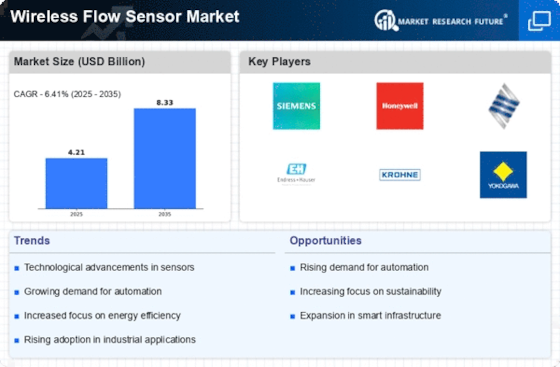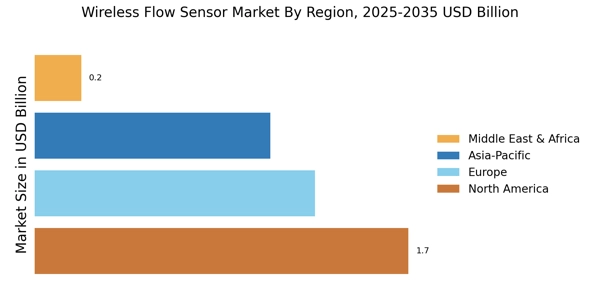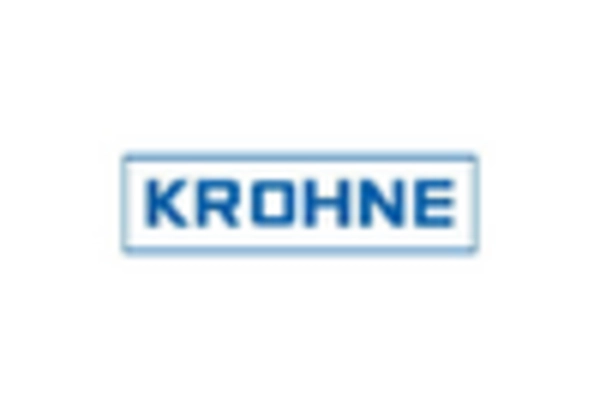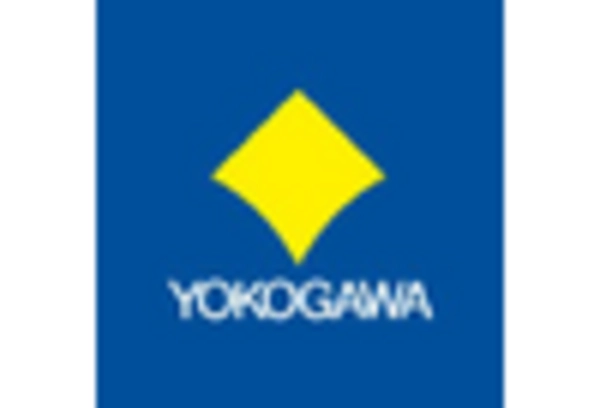Rising Demand for Automation
The Wireless Flow Sensor Market experiences a notable surge in demand for automation across various sectors, including manufacturing, water management, and HVAC systems. As industries increasingly adopt automated solutions to enhance operational efficiency, the need for precise flow measurement becomes paramount. This trend is driven by the necessity to optimize resource utilization and reduce operational costs. According to recent estimates, the automation sector is projected to grow at a compound annual growth rate of approximately 9% over the next five years. Consequently, the Wireless Flow Sensor Market is likely to benefit from this momentum, as these sensors provide real-time data that facilitates informed decision-making and process optimization.
Growing Environmental Regulations
The Wireless Flow Sensor Market is significantly influenced by the tightening of environmental regulations aimed at reducing waste and promoting sustainable practices. Governments and regulatory bodies are increasingly mandating the monitoring of fluid flow in various applications, such as wastewater treatment and industrial processes. This regulatory landscape compels industries to adopt advanced flow measurement technologies to ensure compliance. The market for wireless flow sensors is expected to expand as organizations seek to implement solutions that not only meet regulatory requirements but also enhance their sustainability initiatives. The increasing focus on environmental stewardship is likely to drive innovation and investment in the Wireless Flow Sensor Market.
Increased Investment in Smart Infrastructure
The Wireless Flow Sensor Market is benefiting from increased investment in smart infrastructure initiatives. Governments and private entities are allocating substantial resources to develop smart cities and enhance urban infrastructure. This investment often includes the deployment of advanced monitoring systems, where wireless flow sensors play a crucial role. By providing accurate flow data, these sensors contribute to the efficient management of water resources, energy consumption, and transportation systems. The trend towards smart infrastructure is expected to drive demand for wireless flow sensors, as stakeholders recognize the value of data-driven decision-making in optimizing urban environments.
Rising Adoption of Smart Water Management Solutions
The Wireless Flow Sensor Market is witnessing a rise in the adoption of smart water management solutions, driven by the need for efficient water resource management. As water scarcity becomes a pressing issue in many regions, utilities and municipalities are increasingly turning to advanced technologies to monitor and manage water distribution systems. Wireless flow sensors enable real-time monitoring of water flow, helping to identify leaks and optimize usage. This trend is supported by the growing awareness of the importance of sustainable water practices. The Wireless Flow Sensor Market is likely to expand as more organizations invest in smart water management technologies to enhance operational efficiency and reduce waste.
Technological Advancements in Wireless Communication
Technological advancements in wireless communication are reshaping the Wireless Flow Sensor Market. The integration of cutting-edge communication technologies, such as LoRaWAN and NB-IoT, enables sensors to transmit data over long distances with minimal power consumption. This evolution enhances the functionality and reliability of wireless flow sensors, making them more appealing to end-users. As industries seek to implement smart solutions, the demand for sensors that can seamlessly integrate with existing infrastructure is on the rise. The Wireless Flow Sensor Market is poised for growth as these innovations facilitate real-time monitoring and data analytics, ultimately leading to improved operational efficiency.

















Leave a Comment